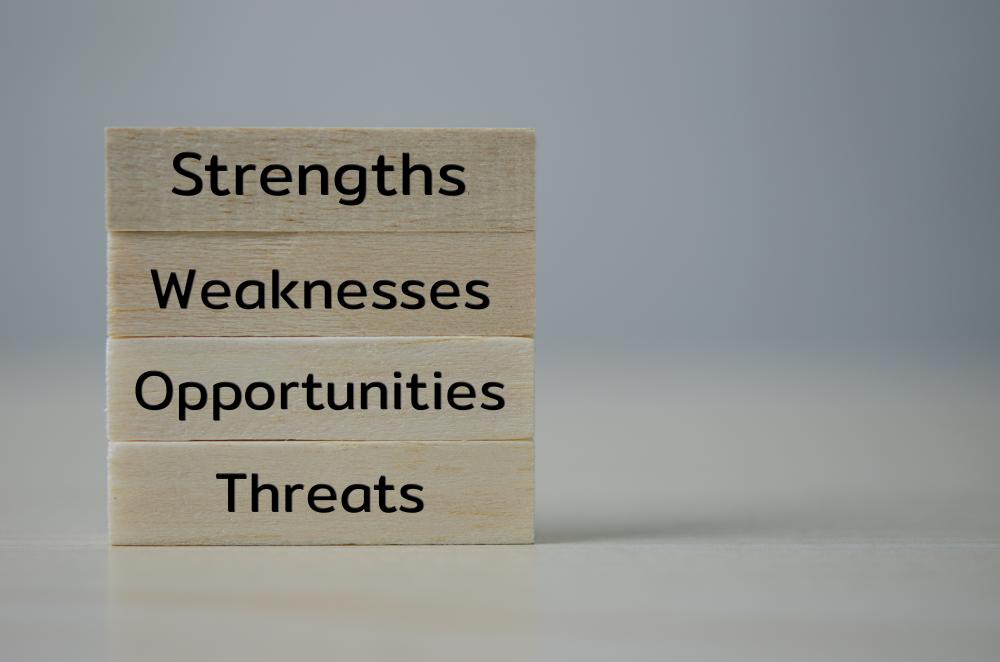
Understanding Strengths and Weaknesses
At Life In Charge, we believe in the power of self-awareness and the pursuit of personal growth. Recognizing and understanding our strengths and weaknesses is a fundamental part of this journey. In this exploration, we delve into the spectrum of personal attributes that define us–our strengths and weaknesses. By doing so, we aim to provide insights into leveraging these qualities to live a life filled with purpose, achievement, and joy.
Importance of Self-Awareness
Self-awareness is the foundation of personal development. It involves an honest assessment of our capabilities and areas for improvement. Acknowledging our strengths allows us to build confidence and optimize our potential. Conversely, recognizing our weaknesses is not an admission of failure but an opportunity for growth and learning.
The Balance between Strengths and Weaknesses
Striving for balance is key. While it’s essential to capitalize on our strengths, we should not ignore our weaknesses. Instead, we see them as areas where we can develop resilience and adaptability. This balanced approach fosters a growth mindset, encouraging us to embrace challenges as opportunities for self-improvement.
Identifying Strengths and Weaknesses
Identifying our strengths and weaknesses can be a revealing process. It requires introspection, feedback from others, and often, stepping out of our comfort zones. Here are some strategies to help you embark on this self-discovery journey:
- Reflect on past successes and challenges.
- Seek constructive feedback from friends, family, and colleagues.
- Experiment with new activities and observe your reactions to different situations.
Real-Life Applications
Understanding our strengths and weaknesses has practical implications in various aspects of our lives, from career choices to personal relationships. It enhances our decision-making process, improves our interpersonal interactions, and guides us in setting realistic goals and expectations.
Leveraging Strengths
To leverage our strengths effectively, we must first identify them clearly. Then, we can find ways to apply these strengths in our personal and professional lives. Whether it’s our ability to communicate effectively, our creative thinking, or our leadership skills, each strength we possess can be a powerful tool for achieving our objectives.
Here are a few ways to put your strengths to work:
- Volunteer for projects that align with your strengths.
- Seek roles and responsibilities that challenge you to use your strengths in new and dynamic ways.
- Share your strengths by mentoring others.
Addressing Weaknesses
Addressing weaknesses is equally critical. It requires a proactive approach: identifying the weakness, understanding its impact, and taking actionable steps to mitigate or improve it. Whether it’s improving time management skills, learning to delegate, or enhancing public speaking abilities, each weakness addressed is a step towards personal growth.
Growth Strategy
Develop a personal growth strategy that includes setting specific, measurable, achievable, relevant, and time-bound (SMART) goals for tackling weaknesses. Seek resources, such as courses or mentorship, to gain the skills and knowledge you need. Reflect regularly on your progress and adjust your strategies as necessary.
Embracing Imperfections
It’s crucial to accept that we are all works in progress and that perfection is an unattainable and counterproductive goal. Embracing our imperfections with compassion and humility allows us to be more authentic and relatable. It’s through our vulnerabilities that we connect with others on a deeper level and find true fulfillment.
Strengths and Weaknesses: Personal Stories
Personally, I have encountered my fair share of trials and triumphs in balancing my strengths and weaknesses. One of my significant strengths, empathy, has allowed me to connect with others easily and foster meaningful relationships. However, this empathy also meant that I often took on the emotional burden of others, leading to burnout. Recognizing this, I’ve learned to set healthier emotional boundaries, turning a potential weakness into an area of growth.
Another area I’ve worked on is my tendency to procrastinate, a common weakness for many. By understanding the root of my procrastination, fear of failure, I’ve adopted a more proactive approach to my tasks and responsibilities. This journey of addressing my weakness has not only improved my productivity but also my overall well-being.
In Addition
Understanding and working with our strengths and weaknesses is a dynamic and ongoing process. It requires patience, effort, and a willingness to step out of our comfort zones. At Life In Charge, we encourage you to embrace this journey wholeheartedly. By doing so, you will unlock your full potential and live a life that is truly in charge.
Remember, the key to personal growth is not to focus solely on enhancing strengths or eliminating weaknesses, but to cultivate a harmonious balance between the two. This balance is what will propel you towards your goals and help you lead a fulfilling life.

What are the 5 strengths and weaknesses?
When we talk about five strengths, we generally lean towards traits such as resilience, empathy, strategic thinking, assertiveness, and adaptability. Each of these qualities can significantly impact how we navigate our personal and professional lives. For instance, resilience allows us to bounce back from setbacks, while empathy can enable us to connect with others on a deeper level, fostering strong relationships.
On the flip side, common weaknesses might include procrastination, fear of failure, difficulty in handling criticism, poor time management, and a tendency to overcommit. These weaknesses, while challenging, offer rich soil for personal growth. Recognizing a weakness like procrastination, for example, gives us a chance to delve into what causes it, be it fear of failure or perfectionism, and to adopt strategies to overcome it. By addressing our weaknesses, we not only improve our productivity but also our overall well-being.
What are three examples of weaknesses?
Three common examples of weaknesses include a tendency to procrastinate, difficulty saying ‘no’, and struggling with public speaking. Procrastination often stems from deeper issues like fear of failure or perfectionism, affecting our ability to manage time effectively. Difficulty in saying ‘no’ can lead to overcommitment and stress, as we take on more than we can handle, trying to please everyone around us. Struggling with public speaking is another common weakness, rooted in fear and anxiety, which can hinder one’s ability to effectively communicate ideas and lead teams. These weaknesses, while challenging, are areas ripe for personal development with targeted strategies and practice.
What is your best weakness answer?
My best weakness, I believe, is my perfectionism. On one hand, it drives me to strive for excellence in everything I do, ensuring high-quality outcomes. However, I’ve recognized that it can also lead to unnecessary stress and delay in completing tasks due to my fear of making mistakes. To address this, I have been learning to set more realistic standards and to appreciate the value of progress over perfection. This approach has helped me to be more efficient and to embrace learning from errors as part of the growth process.
What is my strength’s best answer?
One of my core strengths is my ability to adapt quickly to change. In today’s fast-paced world, being adaptable allows me to navigate through uncertainties and challenges with confidence. This strength has empowered me to take calculated risks and to step out of my comfort zone, fostering both personal and professional growth. I leverage this adaptability by staying open to new ideas, continuously seeking to learn, and being flexible in my approach to problem-solving and decision-making.
Why is self-awareness crucial in understanding strengths and weaknesses?
Self-awareness is the cornerstone of personal growth. It enables us to have a clear understanding of our inner world, our capacities, and the areas where we need improvement. By being self-aware, we can identify our strengths and leverage them more effectively, maximizing our potential. Additionally, acknowledging our weaknesses doesn’t make us inadequate; rather, it provides a roadmap for development and learning. This balanced perspective fosters a growth mindset, encouraging resilience, adaptability, and a proactive approach to life’s challenges.
What strategies can help in identifying strengths and weaknesses?
Identifying strengths and weaknesses is a reflective process that requires honesty and openness to feedback. A powerful strategy is to reflect on past experiences, noting when you felt most engaged and successful, as these moments likely align with your strengths. Conversely, consider scenarios that you found particularly challenging or tasks you tend to avoid, as these could indicate areas of weakness. Seeking constructive feedback from friends, family, and colleagues can also provide external perspectives on your traits and behaviors. Experimenting with new activities and stepping out of your comfort zone can further reveal hidden strengths and uncover areas for improvement. This exploration is a journey of self-discovery that can lead to profound personal growth.
How can one effectively leverage strengths and address weaknesses?
Leveraging strengths involves recognizing and applying them in various aspects of life, from career to personal development. It’s about finding opportunities where your strengths can shine and contribute to your success and fulfillment. To address weaknesses, start by acknowledging them without judgment. Developing a growth plan with specific, actionable steps can help mitigate their impact. For instance, if poor time management is a weakness, adopting tools and techniques to enhance productivity can be beneficial. Seeking mentorship and learning opportunities can also provide support and guidance in turning weaknesses into areas of growth. Remember, the goal is not to eliminate weaknesses but to manage them effectively while capitalizing on your strengths.
Resources for Self-Awareness
- Positive Psychology – Self-Awareness Matters: This article discusses the importance of self-awareness and provides practical tips for enhancing it.
- Psychology Today – Personality Tests: Take a variety of personality tests to gain insight into your strengths and weaknesses.
- MindTools – Identifying Your Strengths and Weaknesses: Learn different strategies to identify your personal strengths and weaknesses for personal growth.
- Forbes – Ways to Leverage Strengths and Weaknesses for Success: Discover how to effectively leverage your strengths and address weaknesses for success in various areas of life.

Recent Comments